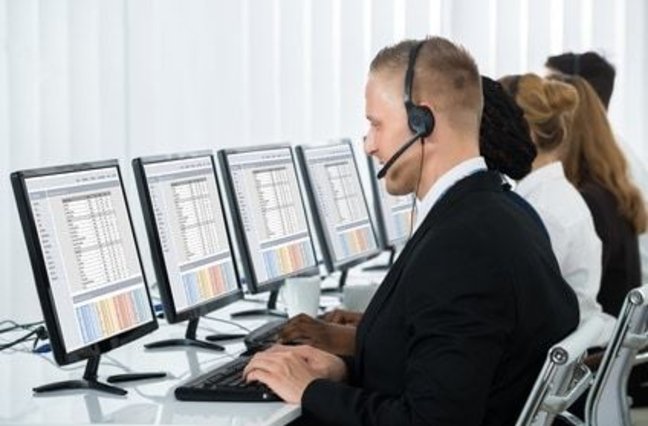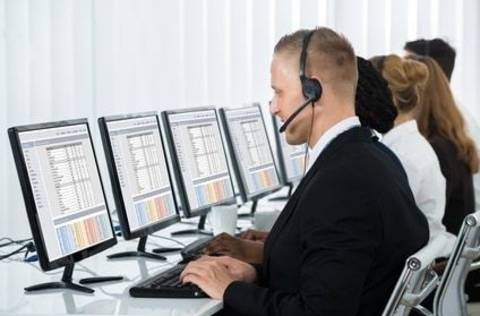How to improve customer satisfaction in 2024 & beyond
Today's companies face a variety of challenges in maintaining customer satisfaction. This blog why it's important, how to improve customer satisfactio...
Solutions
Products
Customers
Resources
Company
Definition of Contact Center Efficiency Call center efficiency is the technical implementation of a simple necessity – supporting your customers. If your business has a call center (or even an online chat box), chances are you’re concerned about performance: How do customers interact with your call center? Are they satisfied? Or, are they running for the hills (a.k.a. your competitors).
On your end, is there a way to streamline your customer service? Can you eliminate any unnecessary steps, be more effective, and better allocate your human resources? Can you reduce costs without sacrificing customer satisfaction?
That is the definition of contact center efficiency – all of the above. In other words, it’s a complex equation that blends customer needs and satisfaction with internal processes designed to eliminate inefficiencies and improve performance.
How to Improve Contact Center Efficiency When it comes to efficiency, it’s best to be, well, efficient: don’t get overwhelmed by the big picture. Instead, look to each individual contact center metric, analyze current results, compare against current standards, and then brainstorm ways to improve overall customer satisfaction, based on a single metric.
If you want to dig in immediately, there are two factors that consistently have a major impact on customer satisfaction, and therefore on your overall efficiency: talk time and handle time.
The goal, both with customer satisfaction and reduced costs in mind, is to reduce talk time. Often, this can be achieved through simple improvements, such as properly routing calls to the correct agents, a process that can be handled with greater accuracy and efficiency with the aid of interactive voice response (IVR) and other technologies. Likewise, reduced handle time is also important to overall customer satisfaction and contact center costs, often by improving internal IT (e.g. through speech analytics and other tools).
The result of reduced talk and handle time: Your customers’ concerns are resolved faster; your customers are happier, because they weren’t bounced from agent to agent; and your agents are able to handle greater call volume, thus reducing your costs.
Beyond these, your company should also look to:
Examples of Contact Center Efficiency Let’s look to two metrics we’ve already discussed: talk time and handle time.
Talk Time: Using CallMiner Eureka, one organization updated its call routing and as a result, effectively reduced talk time by 82 seconds per call. Even better, when call volumes increased the following year, the organization’s contact center agents were able to handle a 12% increase in calls.
Handle Time: Another company leveraged CallMiner Eureka to identify a problem with long silence blocks during their patient billing calls; the blocks occurred every time agents waited for the billing system to respond to voice prompts. As a result, the company was able to hand off the problem to their IT team, who tweaked the billing system, and literally overnight reduced the company’s average handle time by 11 seconds.
Benefits of Contact Center Efficiency Happy customers are, unquestionably, the most important factor in a successful business. And yet, for most businesses, customers are not automatically happy; there will always be questions, problem-solving, and other customer service issues to handle.
And that is the heart of contact center efficiency: solving problems, answering questions, and attending to other customer concerns, in a timely and helpful manner.
We repeat – in a timely manner. Because timeliness, when it comes to customer satisfaction, is a crucial factor. In fact, consulting firm Service Quality Measurement (SQM) Group found that for every 1% boost in first-call resolution rates, customer satisfaction also jumps 1%. What’s more, poor wait times could cost U.S. businesses a staggering $100 billion a year.
Customer satisfaction isn’t the only benefit to greater contact center efficiency; improving various metrics also lowers your operating costs – you’ll have fewer repeat callers – while improving your employee satisfaction rate and reducing your risk of unhappy customers abandoning your product or service. In other words, everyone wins when your contact center operates efficiently.
Challenges of Contact Center Efficiency As with many other plans for your business, the greatest challenge to contact center efficiently is execution: How can you establish, and then execute a plan for an efficient contact center?
Wrapped up in this challenge, is the question of metrics: Which metrics are the best measure of efficiency? Where should you focus your efforts first? Which brings us to…
Best Practices for Contact Center Efficiency The good news is, contact center efficiency boils down to a few standout metrics, from which your company should develop company standards and expectations. Use these metrics to track, test, analyze and build, to achieve optimal efficiency and customer satisfaction:
Never rest on your laurels. Best practices require you to constantly and consistently track, evaluate and improve upon these metrics. Which brings us to our final point, call observation. Recording live calls and, in some cases, observing live calls, will help you further evaluate the effectiveness of your customer service representatives, and eventually to establish even better standards to boost call center customer satisfaction.
CallMiner is the global leader in conversation analytics to drive business performance improvement. Powered by artificial intelligence and machine learning, CallMiner delivers the industry’s most comprehensive platform to analyze omnichannel customer interactions at scale, allowing organizations to interpret sentiment and identify patterns to reveal deep understanding from every conversation. By connecting the dots between insights and action, CallMiner enables companies to identify areas of opportunity to drive business improvement, growth and transformational change more effectively than ever before. CallMiner is trusted by the world’s leading organizations across retail, financial services, healthcare and insurance, travel and hospitality, and more.

